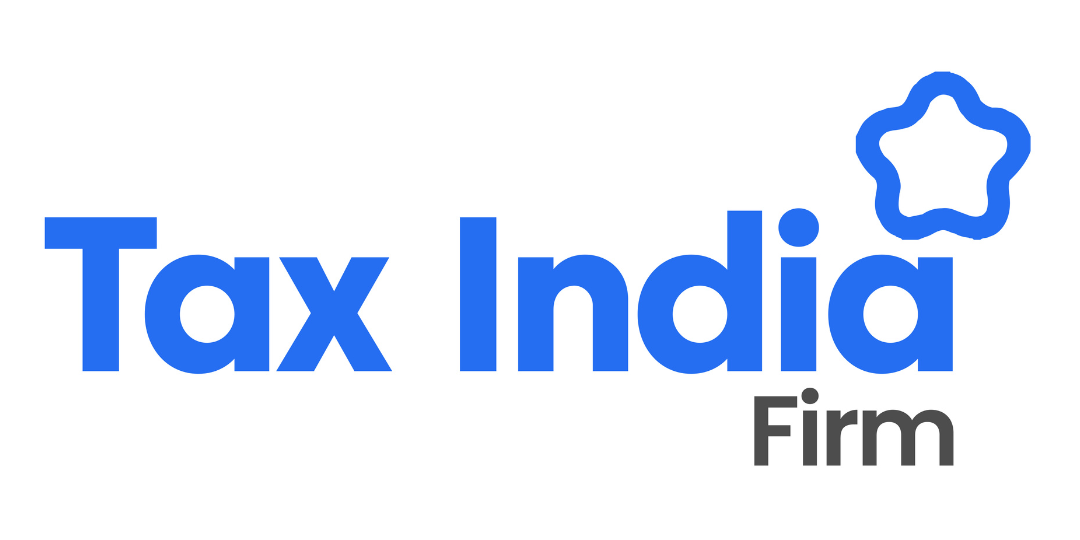ESI Return Filing in Chennai
Employees’ State Insurance (ESI) and Provident Fund (PF) registrations are essential compliance requirements for businesses in India. ESI offers health insurance and social security benefits, while PF ensures retirement savings for employees. Ensuring timely and accurate registration for these schemes is crucial for maintaining legal compliance and fostering a supportive work environment.
- Regulatory Compliance
- Employee Benefits
- Operational Efficiency
- Legal Protection

Overview of ESI Return Filing in Chennai
ESI Return Filing is a key requirement for employers to comply with the Employees’ State Insurance (ESI) Act in India. It involves submitting periodic reports to the Employees’ State Insurance Corporation (ESIC), detailing employees’ wages and the corresponding ESI contributions.
These returns must be filed monthly or quarterly, depending on the business size and type. By filing the ESI return accurately and on time, employers ensure compliance with the law and provide their employees with vital social security benefits, such as medical care, maternity support, and compensation in case of accidents.
Employers can file their ESI returns online via the ESIC portal or seek assistance from professional service providers in Chennai.
Benefits of ESI Return Filing in Chennai
- Compliance and Penalty Avoidance: Filing ESI returns on time ensures compliance with legal requirements and avoids penalties associated with delays or mistakes in submission.
- Employee Protection: ESI Return Filing ensures employees receive critical benefits like medical care, maternity support, and accident compensation, offering financial and health security.
- Improved Employee Satisfaction & Retention: Providing social security benefits enhances employee trust and loyalty, leading to improved job satisfaction and retention.
- Streamlined Payroll Management: Regular ESI return filing simplifies payroll management, reduces administrative burden, and improves operational efficiency within the company.
Required Documents for ESI Return Filing
To file an ESI return in Chennai, employers need to gather the following documents:
Attendance Register:
To record employee attendance.
Register for Form 6 :
For tracking employee contributions.
Register of Wages:
To document employees’ wage details.
Inspection Book:
To record any inspections conducted.
Monthly Challan:
Proof of monthly ESI contributions.
Accident Register :
Details of any accidents that occur on premises.
Employee List:
Monthly pay details of all employees.
Director/Partner Information:
List of directors, partners, or company owners.
PAN Card & Address Proof:
Business registration documents and proof of business location.
Bank Records:
Proof of business bank account and commencement of operations.
These documents provide the necessary details to calculate and validate ESI contributions for employees and ensure proper return filing.
Procedure for ESI Return Filing in Chennai
Here’s a simplified process for ESI Return Filing in Chennai:
- Gather the Required Documents: Collect all the necessary employee and business information, including wages, ESI numbers, PAN, and payment proofs.
- Calculate ESI Contributions: Based on employees’ wages, determine the correct ESI contributions to be made by both the employer and the employee.
- Prepare the ESI Return: Fill out the ESI return form, either manually or using online tools available on the ESIC website.
- Submit the Return: File the completed return form with ESIC, either online or at the designated ESIC office, within the specified deadlines.
- Pay the ESI Contributions: Ensure that the contributions are remitted to the ESIC through the designated banks or online payment systems.
Employers can also engage professional service providers to streamline the return filing process and ensure compliance with ESI regulations.
Get A Free Consultation
FAQ'S
ESI is a social security and health insurance scheme for Indian workers. It provides benefits such as medical care, maternity leave, sickness benefits, and pensions to employees who are covered under the scheme. It is administered by the Employees’ State Insurance Corporation (ESIC) and is applicable to establishments with a specified number of employees.
The Provident Fund (PF) is a retirement savings scheme for employees. Under the Employees’ Provident Funds and Miscellaneous Provisions Act, 1952, both employers and employees contribute a percentage of the employee’s salary to the Provident Fund. The accumulated fund, along with interest, is available to employees upon retirement, resignation, or in specific cases of emergency.
To be eligible for ESI registration, an establishment must meet the following criteria:
- Number of Employees: Typically, establishments with 10 or more employees are required to register for ESI. However, the threshold may vary based on specific industry rules and state regulations.
- Wage Limits: Employees earning up to ₹21,000 per month (or ₹25,000 for persons with disabilities) are covered under the ESI scheme.
- Type of Establishment: The establishment must fall under the defined categories such as factories, shops, and other commercial entities.
To be eligible for PF registration, an establishment must:
- Number of Employees: Register if it has 20 or more employees. However, smaller establishments can voluntarily opt for PF registration.
- Wage Limits: Employees earning up to ₹15,000 per month are automatically covered under the Employees’ Provident Fund Scheme, although the employer can choose to include employees earning more than this limit.
Type of Establishment: Applies to all types of establishments including factories, shops, and commercial businesses.
The registration process for ESI involves:
- Obtain Digital Signature Certificate (DSC): Required for online submission of documents.
- Visit the ESIC Portal: Access the ESIC online portal and fill out the required application form.
- Submit Documents: Provide necessary documents such as the company’s registration certificate, employee details, and proof of address.
- Receive Code: Upon successful registration, you will receive a unique Employer Code Number.
- ESI Compliance: Ensure timely payment of contributions and submission of relevant employee details.
The PF registration process involves:
- Obtain Digital Signature Certificate (DSC): Needed for filing forms online.
- Access the EPFO Portal: Register through the Employees’ Provident Fund Organisation (EPFO) website.
- Fill out Form 9: Complete Form 9 for registration with details of the establishment and employees.
- Submit Required Documents: Include documents like the company’s registration certificate, PAN card, and details of employees.
Receive Establishment Code: After successful registration, you will get a unique PF Code Number.
The contribution rates for ESI are:
- Employee Contribution: 0.75% of the employee’s gross salary.
- Employer Contribution: 3.25% of the employee’s gross salary.
These rates are subject to change based on government regulations and updates.
The contribution rates for PF are:
- Employee Contribution: 12% of the employee’s basic salary and dearness allowance.
Employer Contribution: 12% of the employee’s basic salary and dearness allowance, which includes 8.33% towards the Employee Pension Scheme (EPS) and 3.67% towards the Employee Provident Fund (EPF).
ESI provides various benefits including:
- Medical Benefits: Free medical care for employees and their families.
- Sickness Benefits: Cash benefits for employees during illness.
- Maternity Benefits: Paid leave and medical benefits for female employees.
- Disablement Benefits: Compensation for employees who are temporarily or permanently disabled.
- Pension Benefits: For retired or permanently disabled employees.
PF provides several benefits, including:
- Retirement Benefits: Accumulated PF amount is available upon retirement.
- Gratuity: Lump-sum payment based on the length of service.
- Provident Fund Advance: Available for specific needs like medical emergencies, education, or housing.
Pension: Pension benefits under the Employees’ Pension Scheme (EPS) upon retirement.
Employees can check their ESI and PF contributions through:
- ESI Portal: Log in to the ESIC portal to view contribution details and claim status.
EPF Portal: Access the EPFO portal to check PF balance, contribution history, and track claims.
Penalties for non-compliance include:
- ESI: Penalties for late payments, non-registration, or incorrect contributions can result in fines or legal actions.
PF: Non-compliance can lead to penalties, interest on delayed payments, and legal proceedings.
- ESI: Employees cannot opt out of the ESI scheme if the establishment is covered under it. It is mandatory for eligible employees.
PF: Employees earning above ₹15,000 can opt out of the PF scheme if the employer agrees. However, opting out may affect future retirement benefits.
Documents required for ESI registration include:
- Proof of Address: Lease agreement, utility bill, etc.
- Company Registration Certificate: Certificate of incorporation or partnership deed.
- List of Employees: Details of all employees, including salary information.
Bank Account Details: For transaction and payment purposes.
Documents required for PF registration include:
- Company Registration Certificate: Certificate of incorporation or partnership deed.
- PAN Card: For tax identification purposes.
- Proof of Address: Lease agreement, utility bill, etc.
- Employee Details: Including their salary, date of joining, etc.
- Bank Account Details: For PF contributions and transactions.
- ESI Contributions: Paid on a monthly basis, usually within 15 days of the end of the month.
PF Contributions: Paid monthly, with the deadline typically being the 15th of the following month.
- Employee Contribution: The statutory contribution is 12%, but employees can choose to increase their contribution voluntarily.
Employer Contribution: The employer’s contribution is fixed at 12%, with specific allocations for EPS and EPF.
ESI claims are processed through:
- Submission of Claim Forms: Employees must submit claim forms to the nearest ESI dispensary or branch.
- Verification and Approval: The claim is verified by the ESIC authorities, and benefits are disbursed as per the eligibility and requirements.
PF claims are processed as follows:
- Submission of Withdrawal Forms: Employees need to submit Form 19 (for EPF) and Form 10C (for EPS) online or at the nearest EPFO office.
- Verification: The submitted forms and documents are verified by the EPFO authorities.
- Disbursement: Upon approval, the accumulated PF amount is transferred to the employee’s bank account.
Recent changes to ESI and PF regulations can include:
- ESI: Updates to wage limits, coverage extensions, and benefits provided.
- PF: Changes in contribution rates, interest rates, and processes for online claims.
It’s essential to stay updated with the latest notifications from ESIC and EPFO to ensure compliance with current regulations.








